MAX FREI, SWISS CRIMINOLOGIST sample taking 1973 and 1978
POLLEN ON THE SHROUD OF TURIN
By DR.PETRUS SOONS
CURRICULUM VITAE: Dr. MAX FREI 1913-1983
Dr MAX FREI was an internationally acclaimed criminologist, held a doctorate in Botany and was a recognized botanical expert regarding the Mediterranean flora. He founded the city of Zurich Police’s Central Scientific Department in 1948 and was its director for twenty-five years. From 1952 on, he began lecturing in criminology at the Swiss Police Institute at Neuchatel and at the German Police Institute at Hiltrup. He was scientific editor of the German review Kriminalistik, was regularly consulted by police forces in Germany and Italy, as well as his native Switzerland, and in 1961 was appointed by the United Nations to become one of the senior investigators into the death of their Secretary-General Dag Hammerskjold. In his criminological work, Frei routinely used analysis of pollens on a suspect’s clothing, to assess whether he might or might not have been at a particular crime scene.
In 1973 Frei was granted permission to take some sticky-tape samples of the dust that he had noticed on the Shroud’s cloth surface. He took twelve sticky-tape samples, which he studied under the microscope in his Zurich Laboratory. As Frei expected, the tapes contained microscopic debris from a lot of different sources. To give an idea we add a list
of these materials observed by him and others:
1) Power-station fly ash (FIAT factory in Turin).
2) Specks of various metals (iron, bronze, silver, gold—think of silver casket).
3) Several wire-like objects like metal shavings (confirmed on the X-rays 1978).
4) Particles of fabric, red silk, blue linen, plain cotton, plain wool, pink nylon.
5) Artist’s pigments, iron oxide, vermillion, madder(red), ultramarine(blue), orpiment(yellow).
6) Pollens not covered with a calcium layer (backside-pollen have this layer).
7) Mineral deposits.
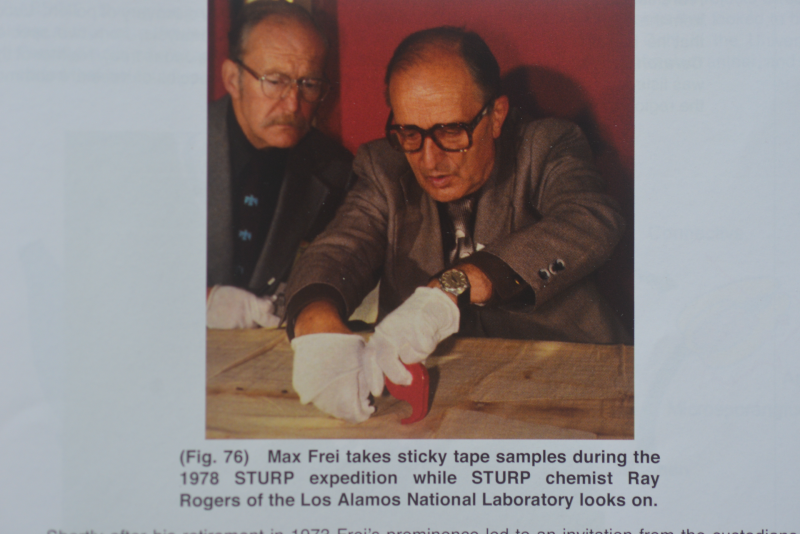
Photo 1. Max Frei taking samples 1978
But what Dr, Frei was particularly looking for, because as a botanist by training, with his greatest expertise palynology, were the grains of pollens. For, as he knew, every pollen grain, although so minute, has a hard outer shell, the EXINE, which can survive literally tens of thousands to millions of years. And as he also knew, each grain differs quite markedly from the next, according to the type of plant it has come from. This means, that if you can identify the type of plant from which a pollen has originated, you can tell at least something of the terrain in which it grew, be it a temperate, desert or tropical climate.
In 1973, Frei used, as mentioned before, adhesive tapes to remove dust samples from various locations on the Shroud and analyzed this dust using a light microscope and a scanning electron microscope. He successfully identified 49 species of pollens, among them from plants typical of the desert regions around the Jordan valley, and specifically adapted to live in soils with the high salt content, found almost exclusively around the Death Sea. Frei also found pollens from plants that he identified as indicating that the Shroud had spent some time in a terrain with steppe-type vegetation. This seemed to suggest to him Turkey, and particularly the more easterly parts of the Anatolian region (Edessa). Frei made some trips to Turkey and Israel to collect plants and pollens from different regions there.
In 1978, Dr Frei removed additional samples from the Shroud and was also given samples from the silver receptacle that the Shroud had been stored in. He successfully identified an additional 8 species, bringing the total up to 57 species, from the Jerusalem area, the Dead Sea area, the Negev desert, Constantinople and the Anatolian steppe of Turkey. Only 17 of the 57 species on the Shroud grew in France or Italy, so practically all the rest were of non-European origin. It is of interest, that one of the pollens found on the Shroud derives from the Syrian Christ thorn, Paliurus SPINA-Christi mill, one of the plants believed to be used in the fabrication of the helmet of thorns.
PALYNOLOGY:
In order to understand the significance of these findings, a brief review of the field of Palinology (study of pollen) will be given. It was Lennart von Pos (1884-1951), a German geologist, who first set forth the basic principles of pollen analysis in his studies of past environments.
He set forth the following basic characteristics:
a) Various plants produce huge quantities of pollens, a pine tree may produce 100 billion pollen grains.
b) The outer walls of pollens (ESINA, EXINA), are extremely durable, surviving for hundreds of millions of years.
c) All pollen of plants of the same species have the same general shape but are different between species.
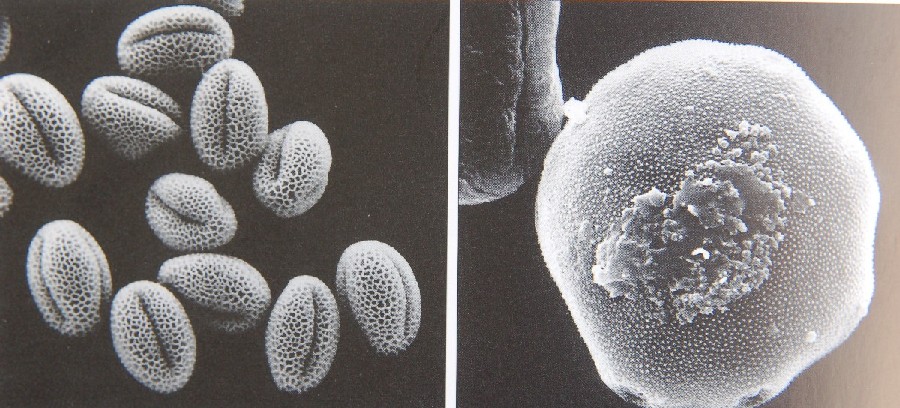
Photo 2. Different Pollen |
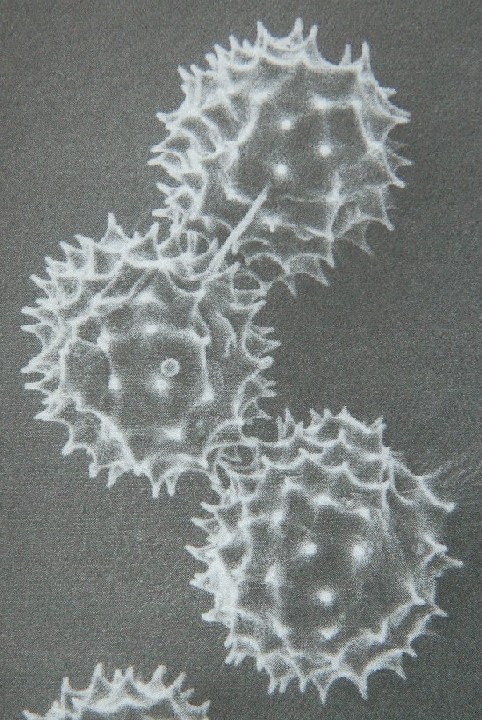
Photo 3. Examples of Different Pollen |
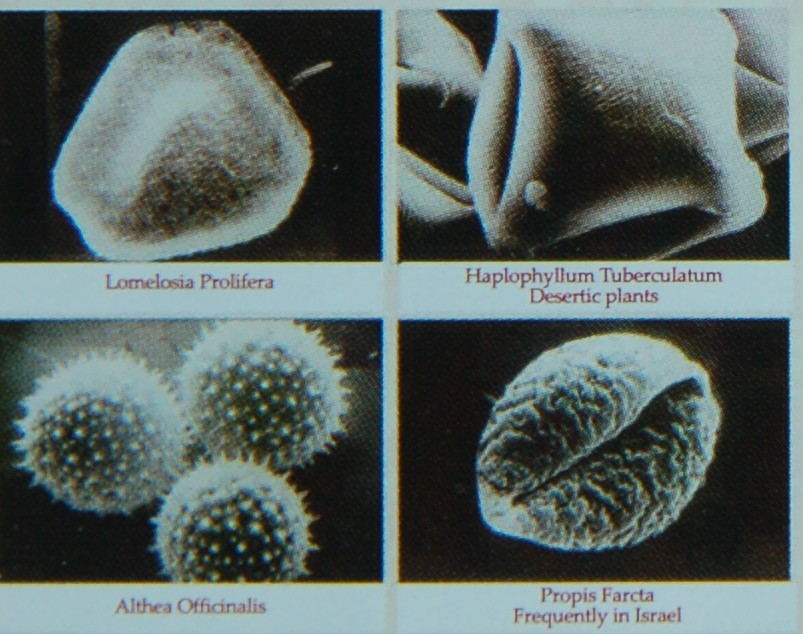
Photo 4. Examples of Different Pollen |
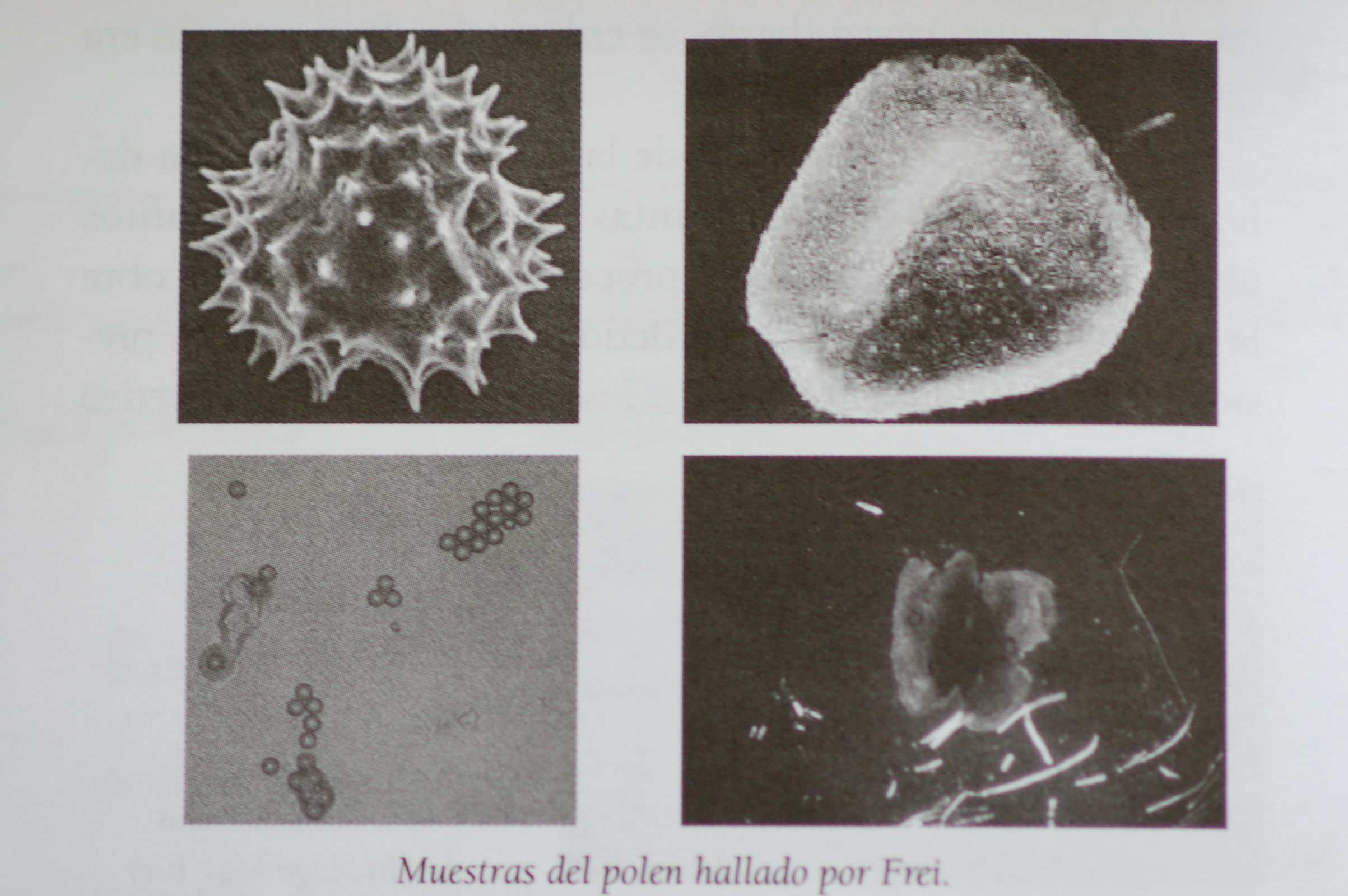
Photo 5. Pollen |
Close to 5% (4,95%) of wind-born pollens fall back to earth within a mile in practically all plants, except for a few that travel up to 30 miles.
Pollens vary in size from ten to two hundred thousandths of a millimeter (one inch, equals 25 millimeters), and they vary in shape from spherical to spiral and are irregular to smooth in appearance.
A protective membrane called the ESINA is present and is very resistant to chemical action, accounting for their excellent preservation under adverse conditions.
Pollens mingle in the atmosphere, are carried by air masses, and fall back to the earth: when they fall in lakes they settle in layers.
Pollens have been used in the forensic sciences to identify suspects in various crimes and to trace movements of individuals, living or dead.
It is of interest that many of the pollens on the Shroud have been found embedded as microfossils in the mud at the bottom of the Dead Sea and Lake Gennesareth by Israeli
Scientists (also of the University of Groningen, the Netherlands). Frei also found that none of the pollens were glued to the cloth or were covered with tempera, adding strong evidence against the Shroud being a painted fake.
That Frei genuinely obtained hundreds of pollens with his sticky-tape sampling (by pressing the tape deep into the cloth) is beyond doubt. In July 1988, thanks to the generous cooperation of his widow Frau Gertrud Frei-Sulzer, at the Hotel Thalwiller Hof in Switzerland, his collection was handed over to the US-based pro-Shroud Group ASSIST. Eight days later there was a Shroud workshop of study of the pollen at The Philadelphia Academy of Natural Sciences, chaired by the Academy’s Head of botany, Dr. Benjamin Stone, and Max Fei’s sticky-tape samples, as just brought over from Europe, were formally and collectively studied by Dr, Walter McCrone, Dr. Alan Adler and others under the auspices of ASSIST.
All present at this meeting were able to view what was on each slide via a microscope specially linked to two video monitors, and not only did there emerge on these slides much of the same detritus as on the STURP tapes, but also hundreds of pollens and a surprising proportion of plant parts and floral debris, suggesting that actual flowers were laid on the Shroud at some time during its history. ASSIST’s Paul Maloney, who subsequently attempted to inventory these pollens observed:
“For example, on the tape which Frei took from the blood-flow from the heel, I have made a quick count of at least seven pollen. And seven were found in a quick count of the tape from the blood-flow across the back. But such quick counts do not really tell the story. My nearly completed photo-inventory of a tape from the dorsal “side-strip”, and the one from the blood-flow down the anatomical left arm, holds more than 160 pollens (bouquets of, flowers around the arms and hands as observed by Avinoam Danin), and one from near the forehead of the Man on the Shroud shows more than 275 pollen. (due to the presence of Anthemis-like or Matricaria-like flowers?? from the family of Asteraceae, Prof. Avinoam Danin and Dr. Petrus Soons)”. End quote.
As Walter McCrone for one, was bound to concede, Max Frei had quite genuinely obtained the pollen he claimed. The one serious question raised by professional pollen analysts was, whether he really could make the identification of the individual pollen down to species level that he appeared to have done in a list of 57 different plant species, all apparently identified by him, as published by an associate after his death in January 1983. What is known of Max Frei is, that his as yet unpublished manuscript (1975) includes description by him of a special procedure that he had developed, for removing pollen grains from sticky-tapes, apparently enabling him to study individual specimens in much greater detail, and with much greater ease, than had hitherto been possible. He gave an interview with La Gazeta del Popolo in Turin on March 8th, 1976 and in 1978 a presentation in the Segundo Congreso Internazionale de Sindonologia in Turin and another interview on March 2nd, 1976 in La Stampa, Turin.
The almost complete sticky-tape collection of Dr. Max Frei, was acquired by Dr. Alan Whanger of Durham, North Carolina, USA, from ASSIST and was in his possession in his home. (The Whangers are the founders of CSST). I personally have studied some of these tapes in the basement of his home in Durham.
After the death of Alan Whanger, the collection was donated to Tom D’Muhala in Raleigh, North Carolina, USA. and is still in his possession.
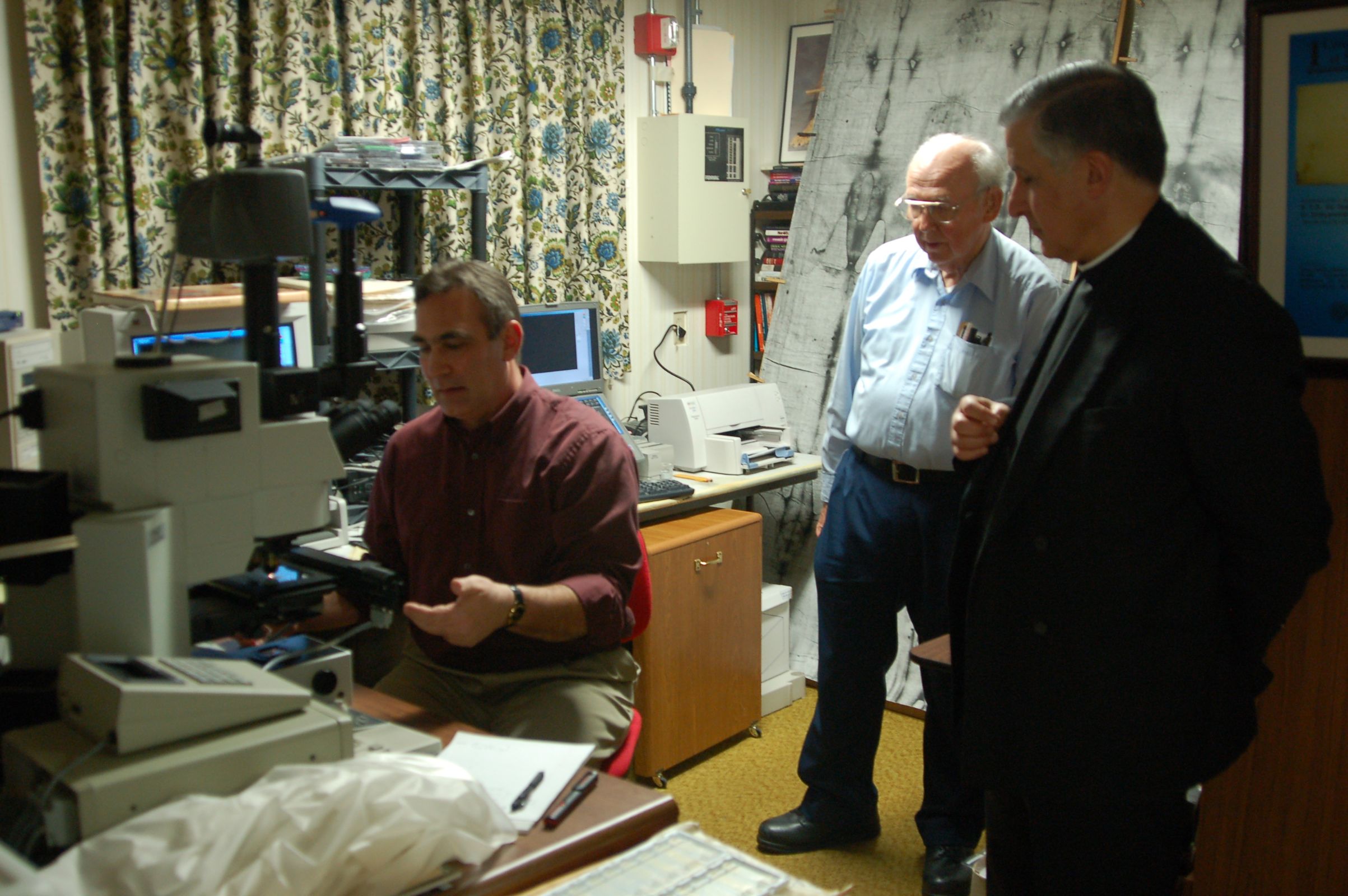
Photo 6. Alan Whanger and Father Guerra research tapes |
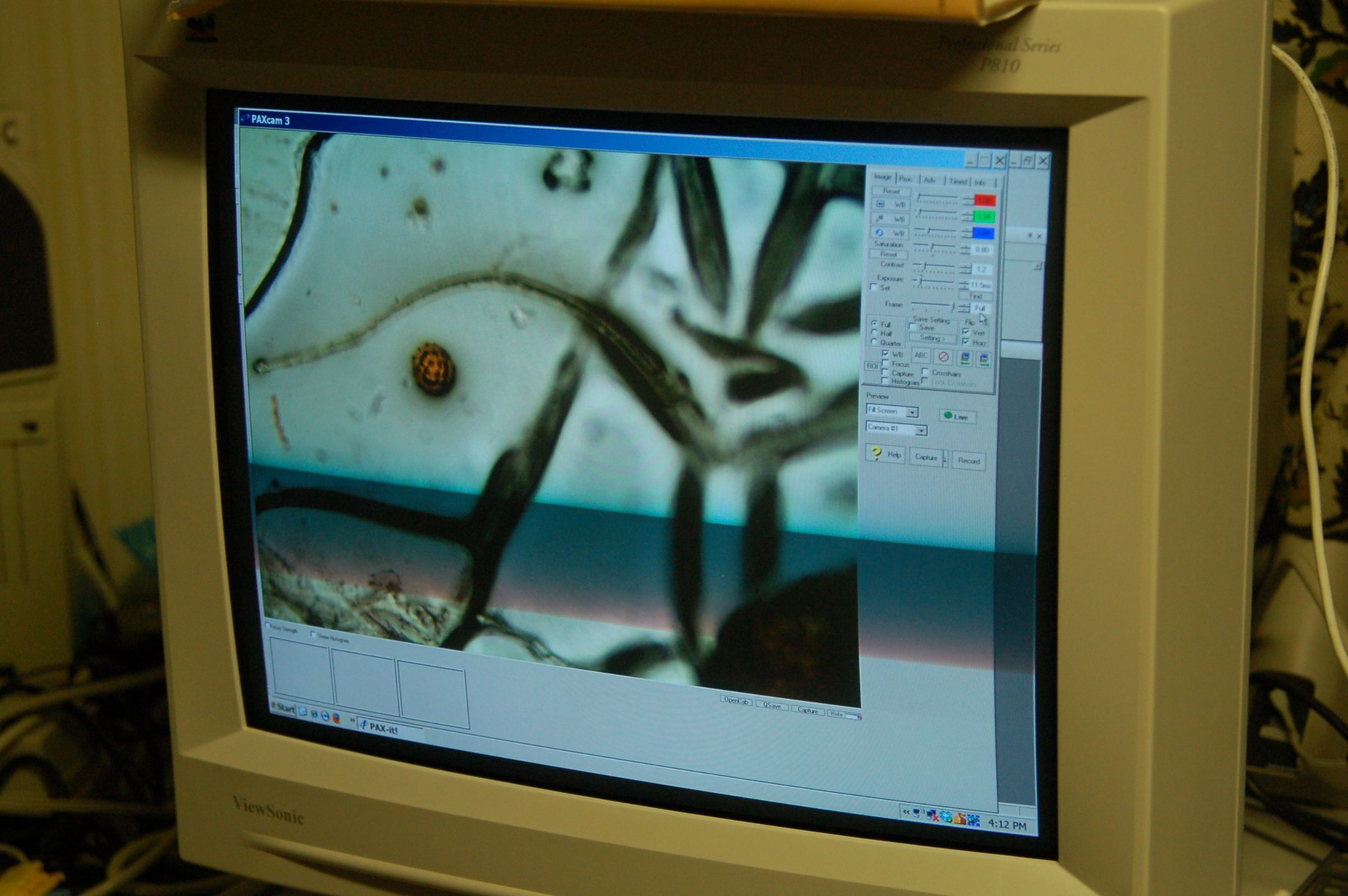
Photo 7. Image of part of one sticky tape |
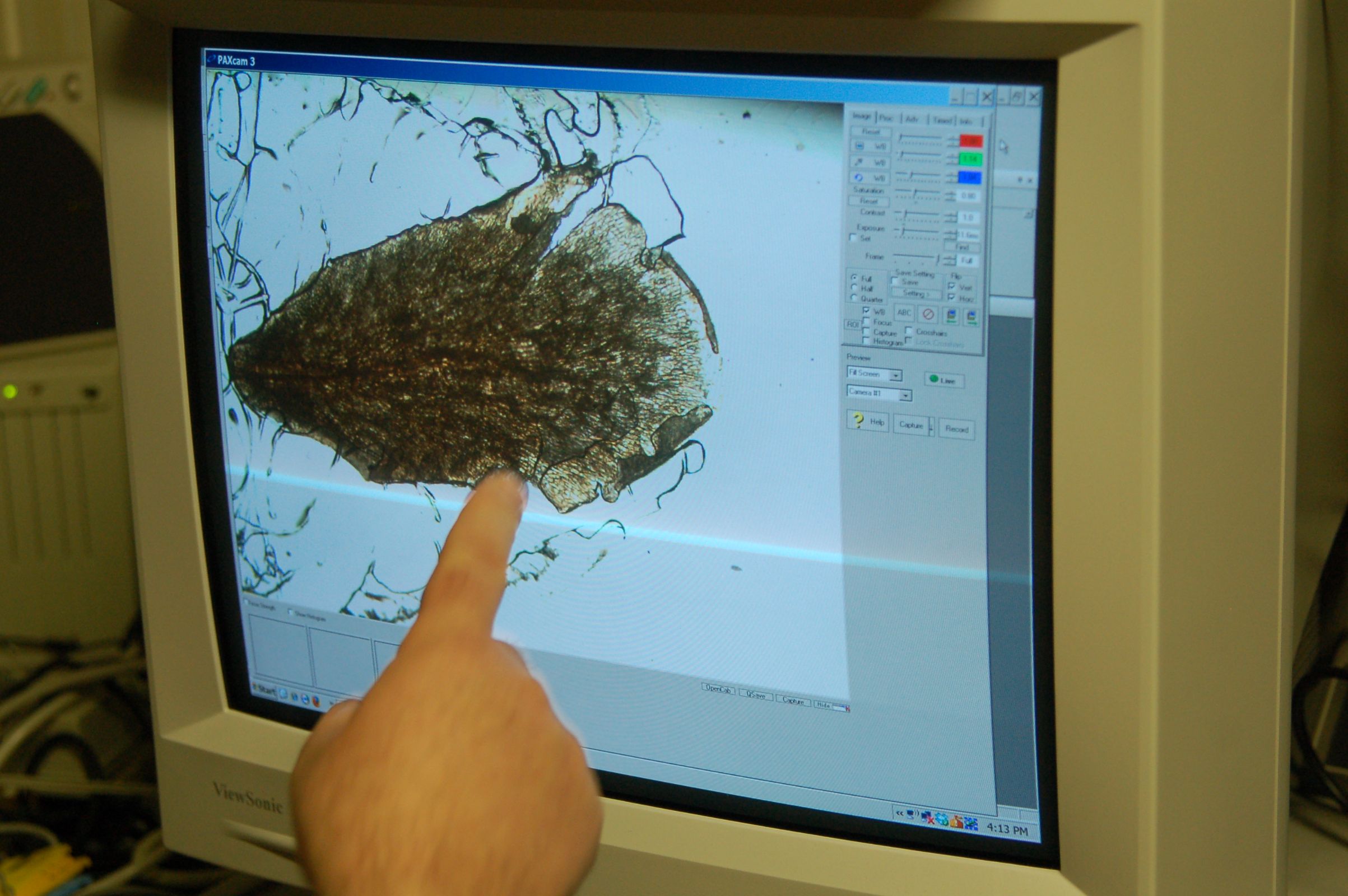 Photo 8. Image of part of one sticky tape
Photo 8. Image of part of one sticky tape
AVINOAM DANIN IN HIS BOOK: “BOTANY OF THE SHROUD “ (2010) writes:
“Continuing research on the collection of the sticky-tape samples taken from the Shroud in 1973 and 1978 by Dr. Max Frei was facilitated by the recent availability of new advanced microscope equipment. The work was done by reviewing several, but not all, of the Frei sticky-tape slides at the end of June 2001, by palynologist Prof. Dr. THOMAS LITT at his laboratory at the Institute of Palynology of the University of Bonn, Germany. Prof. LITT wrote in his report:
“The images produced by light microscopy (interference contrast) and by confocal laser-scanning microscopy show clearly that waxes are preserved and cover the structure and sculpture of the pollen grains. This is the reason why I cannot make a precise identification of the pollen at the genus level, even less at the species level. However, with a high probability, I can exclude that the pollen I have seen on the sticky-tapes belong to Gundelia tournefortii”.
It was felt in previous examinations of the tapes by light microscopy, that the most common type of pollen grain could be identified as Gundelia tournefortii, a thorn from the sunflower family. Thus, the pollen grains according to Prof. LITT do not assist us at present as geographical indicators as definitely as do the floral images which are on the Shroud. (Research: pollen on the front of the head Anthemis?).
GIOVANNI RIGGI: MINERAL DEPOSITS ON POLLEN FROM THE BACKSIDE OF THE SHROUD.
There is one further finding which has come to light, which still concerns the pollen, but which also takes us into yet another variety of extraneous material on the Shroud’s surface: MINERAL DEPOSITS. The well-known Turin micro-analyst GIOVANNI RIGGI, during his analysis of the materials that he had vacuumed from the Shroud’s underside, reported coming across pollen among these, which he did not have the expertise to identify, but among which he noticed an approximately fifty percent proportion that would not have been identifiable by Dr. Max Frei, since they had on the surface a thick, calcium-rich mineral covering, coating all their otherwise distinctive features. So, it was a surprise to Riggi, when he was shown the slides of some 160 pollen, that ASSIST’s Paul Malloney had photographed from the Frei tapes, all but one of these appeared free of any such coating. Frei had taken his samples from the Shroud’s image side (front) and Riggi had vacuumed his pollen from its underside (back), i.e. the side which had theoretically, laid in contact with the stone tomb.
The strong implication had to be, that the Shroud’s underside (back-side), had been effected by once having lain on some calcium-coated surface in a way, that the body-image side (front side) had not , raising the question, could this mineral coating have come from the rock of a tomb in Jerusalem?
IN A RECENT CONFERENCE HELD IN VALENCIA ON THE HOLY SHROUD, the work of MARZIA BOI, a researcher at the University of the Balearic Islands, caught attention. Boi is an expert in palynology. (her work was published by the Vatican Insider).
Boi said: “The pollen on the Shroud, which until now have been linked only to the geographical origin of the relic, also contains traces of the oils and ointments applied to the body as well as to the Shroud. This has an ethnic-cultural significance because they have to do with funerary practices at the time. These pollen particles, which are indestructible in time, are a snapshot of funeral practices 2000 years ago, and show the herbs and spices used to preserve the body. The oleaginous substances have allowed the pollen to be fixed, impregnated and hidden in the fabric itself, like invisible witnesses of an extraordinary event”.
Traditional Hebrew rites in use at the time required the application of oils and perfumed ointments on the body as well as the funerary shroud.
Boi also analyzed previous pollen studies conducted on the Shroud. For instance, Max Frei, the renowned Swiss Palynologist, left valuable documentary accounts of his work. Examination of the pollen with instruments far more sophisticated than 30 years ago led Boi to correct some identifications made by Frei.
The most significant correction has to do with the pollen identified by Frei as coming from Gundelia tournefortii, one of 23,000 species in the world, belonging to the Asteraceae family, and which grows in the mountain deserts of Asia Minor. In 1999, two Jewish scholars, Avinoam Danin and Baruch, published a book called “Flora of the Shroud” in which they confirmed that the Gundelia pollen was the most abundantly represented in the Shroud and even hypothesized that the crown of thorns was from a Gundelia plant. (Danin retracted these findings later).
Marzia Boi disagrees (like Prof. Litt in 2001 before her), and says that based on her electron-microscope examination of the pollen, it comes from Helichrysum, which she finds the most abundant pollen found on the Shroud (29,1%).
This is followed by three other plant genera, Cistaceae, Apiaceae and Pistacia, in the amount of 8,2%, 4,2% and 0,6% respectively. She says: “I can see that what was believed to be Anemone pollen, actually comes from Pistacia (Avinoam Danin found images of many Pistacia all over the Shroud). I identify pollen from Ridolfia segetum as coming from a plant called Helichrysum which is part of the Asteraceae family.
( Cistaceae= Family and Cistus criticus= Species: Apiaceae= Family and Ridolfia segetum= Species: Anacardiaceae= Family and Pistacia lentiscus-atlaniticus-palaestina= Species: Asteraceae= Family and Helichrysum= Species ).
“All these genera employ insect-borne pollenization, not airborne. This means that the shroud had to have a direct contact with the plants or with their products used in the funerary preparations. And the list shows those plants that were most used as the basis for the funerary rites of the time. The identified pollen species make it clear that oils and ointments were applied to the Shroud and probably also to the body that it enclosed”.
The leaves, fruit and bark of the Pistacia genus yielded a balsam that was used for ointments. But Helichrysum produced an oil of excellent quality which was used to anoint both the bodies and their burial shrouds. Boi says: “The use of this oil in ancient funerary rites is documented in many countries from the Middle East to Greece.
She concludes: “The dominant pollen species found in the Shroud are the image of a funeral rite used 2000 years ago in Asia Minor. They come from plants which are the components of the most precious oils and ointments at the time and which have remained extraordinarily sealed in the fabric……The correct identification of the Helichrysum pollen, which was erroneously said to be Gundelia, confirms and authenticates the importance of the person for which the Shroud was used”.
MAX FREI TAKES SAMPLES FROM THE SUDARIUM OF OVIEDO on invitation of Monsignore Ricci, who had studied this fabric.
The conclusion of Max Frei was that he found pollen of six species of plants coinciding with the ones found on the Shroud. Two of these were characteristic for Palestine and others that were not found on the Shroud, came from the North of Africa. The Sudarium did not contain species of the region of Turkey and the rest of Europe, which would indicate a different route for the Sudarium than the Shroud coming to Europe.
Collecting samples of the dust on the Sudarium by means of an adjustable pump with slight suction, the palynologists of EDICES, who did investigations on the Sudarium, have indicated the presence, among other things, of pollen of three fundamental types: Quereus (oak), Pistacia palestina (mastic tree, terebinth tree), and Tamarix (tamarind tree, salt cedar),as possible geographical indicators of the presence of the Sudarium in Palestine.
The other pollens that have been identified, clearly indicate a flora characteristic of the Mediterranean region. A total of 141 pollens and 10 spores include such types as alder, juniper, oak, olive, pine, black poplars, sagebrush, nettle, terebinth, bramble, tamarind, salt cedar, thistle, clover, garlic, chestnut and willow. It is considered that 99% of the taxons correspond to Mediterranean vegetation, including Palestine, and 1% to Atlantic vegetation. It has therefore been concluded that the route followed by the Sudarium is clearly through the Mediterranean region, whose typical forest is composed of oak and scrub oak. The traditional odyssey of the cloth, as mentioned in the historical documents, was first from Jerusalem to Alexandria, and then across the Mediterranean Sea to Spain, a voyage that corresponds perfectly to the pollens found on the relic.
The vegetation in Palestine is typically Mediterranean; The Palestinean thicket has the name of ”batha”, with the presence of the kermes oak accompanied by the terebinth tree. Certain trees and bushes, such as the pines, poplars, alders, savins and junipers, are all Mediterranean and also found in Palestine. The willows are trees and bushes typical of the corridor forests that border the rivers and are widely cultivated in gardens and used since ancient times to make different types of baskets. The chestnut belongs to the Atlantic vegetation, found in Spain in the humid northern zone. Its presence on the cloth indicates its safekeeping once in Oviedo.
The presence of aloe and myrrh has been positively identified on the cloth, as well as residues of beeswax, vegetal wax, and conifer resin. The aloe appears in greatest quantity in the areas in which there is more blood, and appears on top of this blood, which means that it was applied to the cloth after the stains were formed. Aloe and myrrh are aromatic substances that were believed to be capable of preserving the body after death. They were used in the burial rituals of first century Palestine, and John mentions that Nicodemus brought a mixture of myrrh and aloe to the tomb to anoint Jesus (John 19:39). Evidence of dust from the explosion of 1934, in which the Holy Chamber was destroyed, was also positively identified. There is also a small stain from silver paint, possibly used to repair the frame at some point during the history of the cloth in Oviedo., and lipstick from a kiss given by one of the faithful.
MAX FREI COLLECTION OF STICKY-TAPES:
In 1994 Alan and Mary Whanger established in North Carolina a nonprofit organization entitled: “COUNCIL FOR THE STUDY OF THE SHROUD OF TURIN (CSST).
They wrote a book together: “THE SHROUD OF TURIN, An adventure of Discovery “
(ISBN: 1-57736-079-6)
I will quote from their book:
“People are wondering how the FREI COLLECTION became available to CSST. After Dr. Frei’s death, Mrs. Frei wanted to get his materials in the hands of some group, who might be able to complete his work and get his manuscript published. She loaned four of the slides to research archaeologist Paul Maloney, Projects Director of Association of Scientists and Scholars International for the Shroud of Turin (ASSIST), and later offered to make the entire collection available through Maloney to ASSIST. Because, at the time, Alan and I were members of ASSIST and had some part in arranging the transfer, we traveled with Maloney and a small group to Zurich in 1988 to effect the transfer. Through unforeseen events, the entire Frei Collection was transferred to our personal custody in 1993 while we were still members of ASSIST. We retain custody of Frei Collection, but have made it available to CSST for study.
(NOTA: After the death of Alan Whanger, a couple of years ago, the Frei Collection was donated to Tom D’Muhala in Raleigh, North Carolina, and he is now in the possession of this precious collection).
We quote the Whangers again: “ When CSST received the Frei Collection, the Whangers considered the most urgent area of research that CSST would undertake ( with the help of some individuals with specialized skills), would be the microscopic examination, digitization, and documentation of the twenty seven (27) sticky-tape slides taken in 1978 that form the core of the research materials known as the Frei Collection. You may remember that Dr. Max Frei took sticky-tape samples from the Shroud which he affixed to glass microscopic slides, and from those slides he identified many pollens. In the Frei Collection, there are two sets of slides, one set taken in 1973 and the other in 1978. Frei removed individual pollens from some of the 1973 slides in order to study them more carefully, but the 1978 slides are still intact. No invasive studies can be done on those slides until they are meticulously and completely documented. The research equipment that CSST now has, will permit complete micro-documentation and retrieval by computer digitization.
The information will be stored in photographic film, video, Jaz drive, and optic disks. This is the first step. After that CSST will be open to further research of Frei Collection materials, by ourselves and others.
I have mentioned earlier that many pollens are on the Frei tapes. The slides contain a wealth of other materials also: plant parts, such as fragments of petals, leaves and bracts; anthers from blooms; fibers from the Shroud, some of them charred; blood shards (hollow coatings of dried blood that had covered fibers), and many extraneous objects from the Shroud’s varied locations and exhibitions. The Frei Collection is the richest, in terms of amounts and variety of materials, of any of the materials that were collected at the time of the 1978 research project, that still have not been adequately studied…………”
END QUOTE WHANGERS.
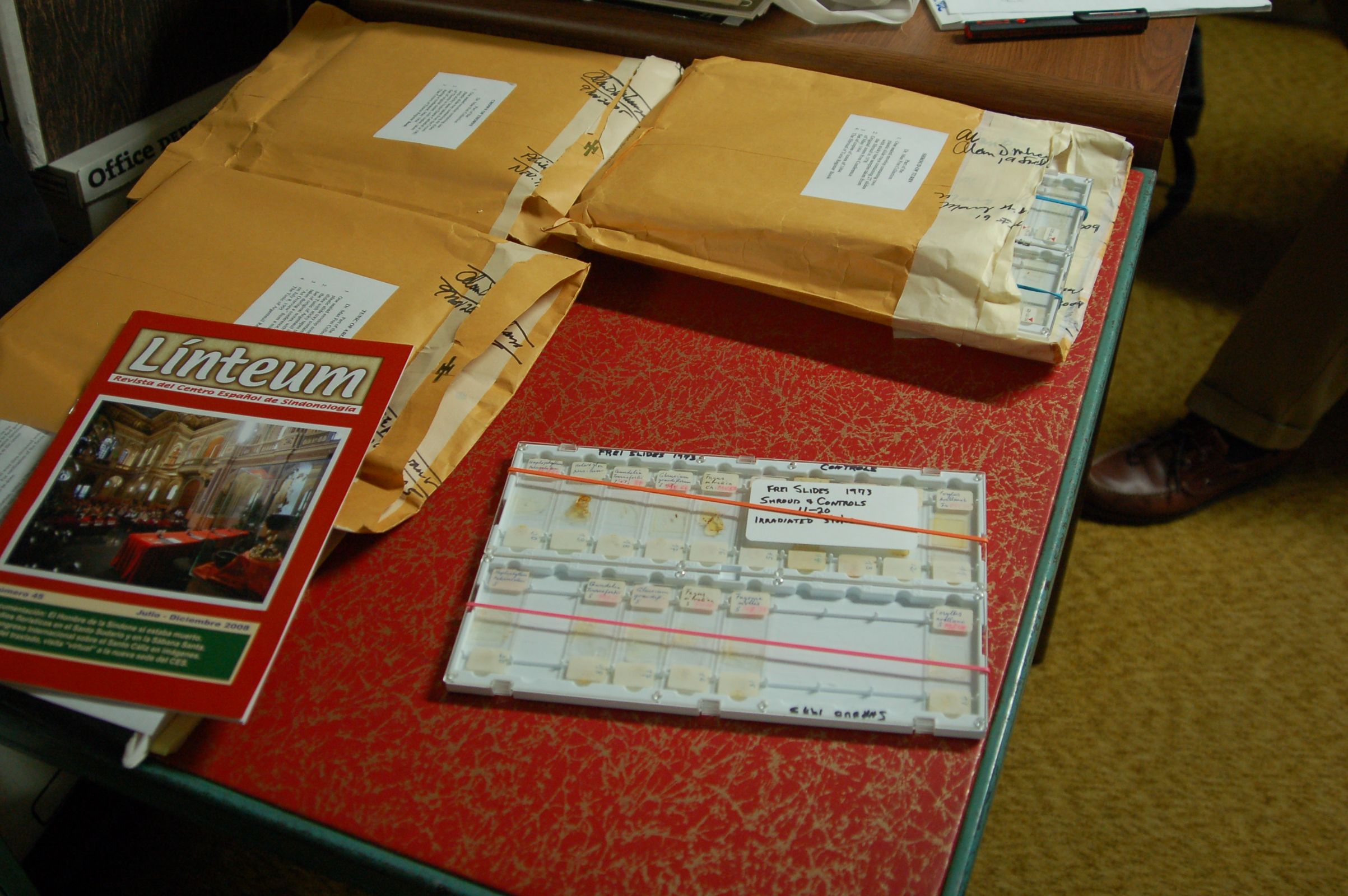
Photo 9. Collection Frei sticky tapes, Durham
